

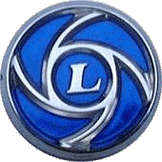
 |
 |
|||||||
© 2025 |
Technical Article: Cylinder Head FasteningOn the Stag engine, the cylinder head studs are not perpendicular to the block, where the head bolts are perpendicular to the block. Expansion and contraction forces are not equal on the lower threads that penetrate into the block to the upper stud threads. There are 8 threads into the block on the stud fully inserted, but only 3.5 threads engaging the upper stud by the head nut. There is more force per square inch taken up on the nut thread area than than distributed across the threads into the block; that is, assuming similar force on top and bottom parts of the stud (which is actually different because of the diagonal insertion into the block at the bottom), the bottom of the stud has a larger thread surface contact to spread out the force, the upper stud has less thread area by more than a 2.2:1 ratio bottom threads to top. The nut takes more than two times the force due to less area. A bolt head onwerver is a part of the metal that forms the bolt. The mechanical engineers say that a stud holds better than a bolt. You make your own determinations, the engine was designed with studs by engineers designing engines. The cylinder block is cast iron, the cylinder head is cast aluminum. The cylinder head studs are hardened steel. From my basic physics, I recall that aluminum expands something like 3:1 to steel for the same heat applied, and contracts in the same ratio. Every time the engine goes through a heat/cool cycle, the expansion/contraction dynamics occur on all of the components. The studs, threads, and nut actually stretch, but being of hardened materal, do not return to their normal position. "N" number of heat/cool cycles later, the nut will be loose on the stud unless other factors keep the nut from backing off. Hence, locknuts, nylocknuts, and thread lockers etc are employed to resist movement after proper torque has been applied. The more temperature cycles the engine goes through, the faster the loosening. Retorquing is always done within 100-500 miles of a new gasket set or head removal, then at an average point for the average driver creating the average number of temperature cycles...or in other words, a scientific wild A@# guess or wide range of mileage to be considered safe without failure of the component. If fasteners were perfect, we would not have cylinder heads blowing the gaskets. Why retorque after 100-500 miles? First, proper mechanical application of a threaded fastener is; once it has been torqued, the expansion forces stretches the fastener, but does not distort the threads. The threads actually jam together. This stretch factor is then accounted for by retorquing the fastener back to original spec, plus a bit. This creates a proper mesh of the ID/OD threads to jam tight. In a perfect application, that should be the last word, the fasterer should hold forever. But, threads, once distorted, now have a different torque and holding rating then when new. When taken apart, new fastening hardware should be used, the old fasteners discarded and replaced with new. This is because once a thread is properly torqued, it has distorted and actually matched its mating thread slightly. You can only distort a thread so many times before it fails from over torque, and the more times you distort it, the less holding force it has, giving it a tendacy to move under loads.
Now that we have torqued properly, let's talk gaskets.So why do gaskets fail? As stated, the steel cylinder block and the aluminum cylinder head expand at different rates, but what does the gasket do? If properly applied, the gasket sticks to the steel block on the bottom side, sticks to the aluminum on the top side, and the fiberous core flexes with the expansion and contractions. This is why a gasket is used in this type of application. Cylinder head gaskets are not used to take up the "space" from groves and imperfections in the metal, but to allow the surfaces some movement from temperature cycling. When the engine is machined, there is less than a half of a thousands of an inch across the surface of the block or head face for tolerance. The head gasket is thick to allow this normal movement without infringing on the integrety of the seal.
Back to the original question, why do gaskets fail?There are four fluids involved passing through the gasket; coolant, fuel, oil, and air. Fuel being combusted runs through a wide range of pH properties during its brief life, eroding the aluminum at the gasket junction. This is why there is a metal ring at most block holes to the head holes which allows both a physical and electrical bond between the two surfaces. The metal rings also help hold the gasket together so it does not separate top to bottom layers. Early coolants had some similar coorosive properties and is why deionized water was recommended when filling. Oil too, when reaching its end of life, has a higher coorosive character that eats the metal surfaces. Clearances are pretty slim between some of the water jacket holes and cylinder to cylinder distances. If, during assembly, any contaminate like oil or water was left on either block or head surface the gasket may not adhere properly. This is why some service experts do not recommend any sealant on head gaskets, but clean the surfaces with a non residue cleaner like brake cleaner or alcohol. This is also why the repair manuals recommend sanding clean both surfaces, and throughly cleaning both surfaces before applying the gasket. Add a loose torque area and the gasket separates in at the contaminate between gasket and metal, or if adhered, in the middle, top from bottom layers, creating a small space. If this separation just happens to occur in the gap between the water jacket hole and the cylinder or oil hole, the high pressure high temperature coolant or combustion gasses see a huge pressure differential and follow the path of lower pressure. In the stag engine, also up the stud holes in the head. For those of you rebuilding your engines, if the gasket has become fixed to the mating surfaces of the block and head, you will notice that dissassembly destroys the gasket, literally pulling it apart. As you curse the scrapping and sanding effort, note that the gasket was most likely working, but improper torque allowed the gasket to fail in the middle layers. If you take the head off and it is loosely sitting there, it was either perfectly matched to both surfaces, or totally useless. Or, you may see that the gasket worked in some areas, but did not adhere to the area where it failed due to contaminates. Some gaskets have a coating that is activated by petroleum, and they recommend a thin wipe of fuel with a clean rag prior to fixing, then they become slightly sticky. Others have coatings that are heat activated, and adhere when things heat up for the first time. Due to the nature of the Stag engine design, a thin coat of sealant such as a spray type gasket sealant will probably be a help to keep things together and sealed. Note that later designs of the TR7 gasket actually included a sealant applied during the manufacture of the gasket. Using a staged torque sequence, that is dividing the torque up into 3-4 parts and letting things rest for a period of time (from hours to overnight) before progressing to the next higher torque will help the gasket crush and form to the metal surfaces. Not keeping proper torque on the fasteners will only allow the gasket to fail more rapidly around that loosened area. Undertorque will allow a blowout/blow through, overtorquing will distort the cylinder head. Torque spec's in the ROM were guestimates based on typical application of the fastener and thread pitch and size, used for the initial fastening of all new components. Experience shows that maybe +5 ft pounds maximum from ROM specification may be more correct on first retorque and then that same value on subsequent retorques. More may collapse or distort the head. HOWEVER, if you have head studs that are corroded into your heads, no amount of retorquing will tighten your heads to the gasket. This is why it is imperative that upon retorquing the heads, the head studs are withdrawn, cleaned, coated with anti seize and reinserted and torqued ONE AT A TIME in proper sequence. This is also why many modern engines do not have a torque specification, but a "number of turns, degrees, or flats" specification that proves the fastener is actually moving the proper compression distance and clamping the component. You can torque a seized bolt or stud forever, never actually move the bolt or clamp down on a gasket. So, begging to differ, please retorque your cylinder heads, just don't move things about on your engine expecting the gasket to keep together and keep a good seal once they have been torqued. Remove the head, replace the gasket. Always follow the retorquing instructions in the ROM, but remember to make sure the fasteners are free to move properly. Glenn Merrell |
6/7/2025   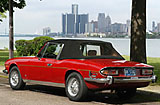 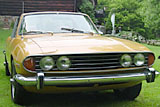 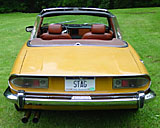 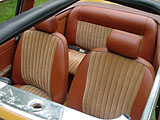  | ||||||